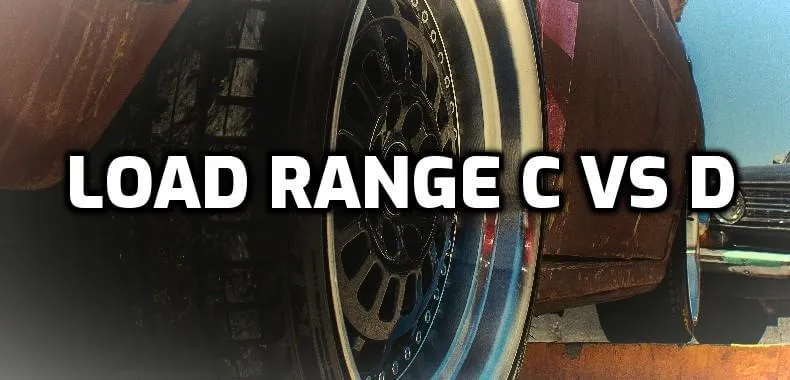Tires Load Range C vs Load Range D

If you are interested to learn about the specifications of load ranges C and D, this is undoubtedly the ideal place for you. Both of these light truck tires are suitable for bearing heavy loads in the tire industry. But still, they do differ in some particular points. Let’s try to figure out the disparities through the following discussion.
Why Compare?
The tire’s load range indicates how much load the tire is allowed to carry at the maximum specific pressure allowed by the industry. Both load ranges C and D are tailored for light truck applications. The exact size of both the tires will differ in the on-road performance. A comparison between these two is essential to let the users know the exact difference.
However, they don’t vary much though. The psi(per square inch) and ply rating are the notable differences between these two high-capacity tires. Look at the chart below to learn more about the specific differences.
Load Range C vs D Table
Load Range C | Load Range D |
Ply Rating is 6 | Ply Rating is 8 |
Markingson tire C | Markingson tire D |
Maximum Load Pressure is 50 psi (350 kPa) | Maximum Load Pressure is 65 psi (450 kPa) |
Longevity is More Durable | Longevity is More Durable |
Maximum load of 1,760 lbs. at 50 psi | Maximum load of 2,150-lb maximum load at 65 psi |
Speed Rating is 60 (km/h) | Speed Rating is 65 (km/h |
As mentioned earlier, the main difference lies in the load capacity and psi rating. If the sizes are the same, they have similar dimensions. Also, both of them will fit on the same wheel.
The capacity is designated by the letter C and D. In this case, the D ranged tires are higher in capacity. The size does matter in the case of performance. The maximum capacity of any load range tires is more or less the same. For instance, LT245/75R16 tires have a load capacity of 2205 lbs and 2623 lbs for C-rated and D-rated, respectively.
Being higher incapacity, a range D tire needs higher inflation pressure. You must inflate them to 65 lbs psi to carry the maximum load unless you cannot expect the ultimate capacity. On the other hand, Range C needs 50 psi load tire pressure. However, if inflated to 50 psi, a range D tire will offer the same load capacity as a range C tire. Even the riding characteristics will be the same.
Load limit D will offer more capacity if only inflated to the maximum pressure. Along with that, it will provide a harsher riding experience. We suggest experiencing a better ride with a load measurement D tire with low air pressure. You can inflate it to full pressure (65 psi) when more loading capacity is demanded.
Whether it is ranged as C or D, you must inflate them to their ultimate psi if you want the best performance. The maximum psi rating ensures the most extended life as well. Let’s go through another example for a better understanding. With a D-rated tire for an ST175/80D13, like the Loadstar item #AM1ST77, the capacity is 1610 lbs at 65 psi. But a C-rated tire in a similar Loadstar item like #AM1ST76 provides the capacity of 1360 lbs at 50 psi.
To determine the best fit, you must rely on the overall capacity. That will be determined by the axle capacity and, to some extent, by the wheel capacity. Just adding the loading capacity D will not let you carry more weight. Although they are higher rated, the axle capacity is the deciding factor here. If the trailer is found to have three axles, the weight limit is not an issue.
Talking about the integral weight capacity, only the trailer’s maximum weight of the lowest-rated component, such as tire, axle, wheel, etc., could be carried. Finally, a set of similar size D tires would last longer than those of load range C. But it has nothing to do with the capacity unless the other factors like size, tire pressure, ride pressure, etc.,
Friendly Reminder
Don’t forget to inflate the tires to the maximum psi as instructed. As they are built with a thick sidewall, excessive heat might be produced if underinflated. This may eventually lead to failure. Get more information about Load Range from another comparison we have called Load Range b vs c.
Conclusion
The letters on the sidewall of a tire are an indication of its load-carrying ability. However, be it a range C or D tire, it only lets you know how much load can it support at the maximum air pressure.
The fact is both these LT tires allow heavy loads to carry by your truck. Just know the exact capability of both at the highest allowable pressure. This will make you understand which one is appropriate for which situation. We hope this load range is C & D comes out conducive for you.
Frequently Asked Questions (FAQ)
